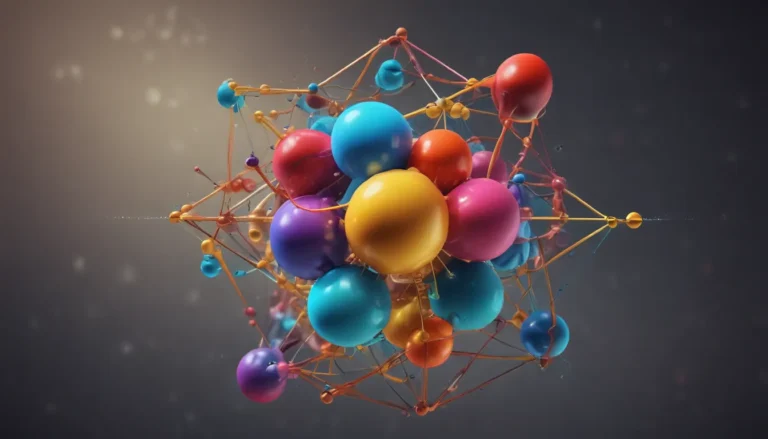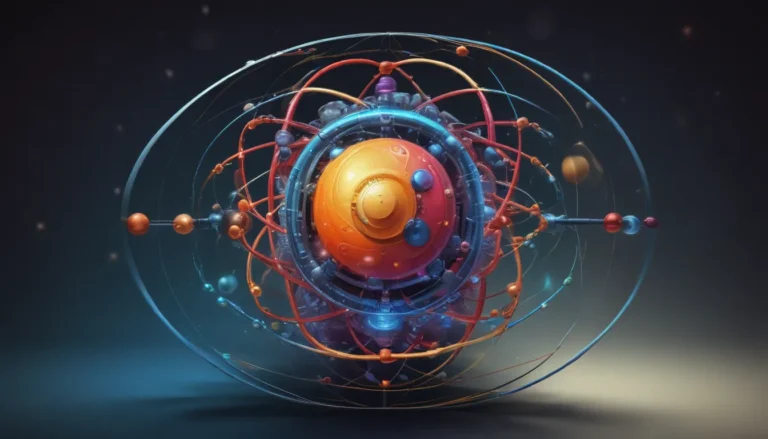A Note About Images: The images used in our articles are for illustration purposes only and may not exactly match the content. They are meant to engage readers, but the text should be relied upon for accurate information.
Welcome to the fascinating world of stoichiometry, a branch of chemistry that unveils the quantitative relationships between reactants and products in chemical reactions. From ancient civilizations to modern industries, stoichiometry has been a cornerstone in shaping the realm of chemistry. In this article, we will delve into 11 intriguing facts about stoichiometry, shedding light on its significance in chemical calculations, industrial applications, and environmental chemistry.
Stoichiometry: The Magical Recipe of Chemistry
Stoichiometry serves as a magical recipe for chemistry, allowing us to measure and understand the ingredients and quantities involved in chemical reactions. It acts as a secret code that unlocks the mysteries of how substances transform into new ones. This fundamental aspect of chemistry is akin to a superhero, aiding scientists in calculating, predicting, and optimizing chemical processes for a better, greener future.
The Roots of Stoichiometry: From Greek Origins to Modern Applications
The term “stoichiometry” is derived from the Greek words “stoicheion” (element) and “metron” (measure), translating to “measuring elements.” This origin reflects the focus of stoichiometry on the quantitative aspects of chemical reactions. Stoichiometry is governed by the Law of Conservation of Mass, affirming that matter cannot be created or destroyed in a chemical reaction. By balancing chemical equations, stoichiometry ensures the preservation of the number of atoms on both sides of the equation.
The Versatility of Stoichiometry in Various Chemical Reactions
Stoichiometry extends beyond balancing equations, encompassing the calculation of theoretical yields in chemical reactions. It enables chemists to determine the maximum amount of product that can be obtained based on the stoichiometric ratio of reactants and products. This valuable insight aids in understanding reaction efficiency and potential yields across different types of chemical reactions, from simple combination reactions to complex redox reactions.
Stoichiometry’s Impact on Industrial Chemistry and Environmental Science
In industrial settings, stoichiometry plays a vital role in optimizing the quantities of reactants required, minimizing waste, and maximizing production efficiency. It ensures cost-effectiveness and sustainability in chemical processes and manufacturing. Moreover, stoichiometry is instrumental in environmental chemistry, allowing scientists to calculate the amount of pollutants produced in reactions, assess their impact on ecosystems, and devise pollution control strategies.
Stoichiometry: Unraveling the Composition of Compounds
By unraveling the stoichiometric ratios in chemical reactions, scientists can determine the composition of compounds. This knowledge is crucial in chemical analysis, facilitating the identification and quantification of substances present in a sample. Stoichiometry serves as a guiding light in understanding the complex composition of compounds and their interactions in various chemical systems.
The Ancient Roots and Future Innovations of Stoichiometry
The principles of stoichiometry have ancient origins, dating back to civilizations like the Greeks and Egyptians, who laid the foundation for chemical calculations. Stoichiometry’s enduring importance in the development of chemical science highlights its timeless relevance in shaping the field of chemistry. By unraveling the intricacies of chemical reactions, stoichiometry paves the way for further advancements in chemistry, enabling researchers to explore new synthetic pathways, understand reaction mechanisms, and push the boundaries of chemical knowledge.
In conclusion, stoichiometry stands as a fascinating branch of chemistry with extensive applications in various fields. The 11 enigmatic facts about stoichiometry presented in this article showcase its vital role in understanding chemical reactions, guiding industrial processes, and contributing to advancements in the realm of chemistry. Whether you are a chemistry enthusiast or a student delving into the subject, a solid understanding of stoichiometry will undoubtedly enrich your knowledge and appreciation of the captivating world of chemistry.
FAQs:
-
What is stoichiometry?
Stoichiometry is a branch of chemistry that deals with the quantitative relationships and calculations involving reactants and products in chemical reactions. -
Why is stoichiometry important?
Stoichiometry is essential as it allows chemists to determine the amount of substances involved in a reaction, predict the products formed, and evaluate reaction efficiency. -
How do you balance chemical equations?
To balance a chemical equation, adjust the coefficients of reactants and products to ensure the number of atoms of each element is equal on both sides. -
What is a limiting reactant?
A limiting reactant is the reactant completely consumed in a reaction, limiting the amount of product formed. -
How is percent yield calculated?
Percent yield is determined by dividing the actual yield by the theoretical yield and multiplying by 100. -
What are some practical applications of stoichiometry?
Stoichiometry finds application in pharmaceuticals, environmental science, food science, and engineering to design efficient chemical processes and determine substance composition and purity. -
Can stoichiometry be applied beyond chemical systems?
While primarily used in chemistry, stoichiometry can be extended to other areas like biology to analyze reaction rates and biological system compositions. -
Who founded stoichiometry?
Jeremias Benjamin Richter, a German chemist, is credited as the founder of stoichiometry. -
What is the mole ratio?
The mole ratio is the ratio of coefficients between substances in a balanced chemical equation, revealing the quantitative relationship between reactants and products. -
Are there limitations to stoichiometry?
Stoichiometry, while powerful, assumes ideal conditions and may overlook factors like impurities and incomplete reactions that can affect accuracy. -
How can stoichiometry be applied in everyday life?
Stoichiometry offers insights into everyday processes like cooking, where ingredient ratios impact the quality and taste of the final product.
Embark on your journey through the mysteries of chemistry by exploring the fascinating facts of stoichiometry. Enhance your understanding of the quantitative relationships in chemical reactions and discover the profound impact of stoichiometry across various fields. As you delve deeper into the enigmatic world of stoichiometry, new insights and revelations await, enriching your appreciation of the intricate balance of the chemical universe.






